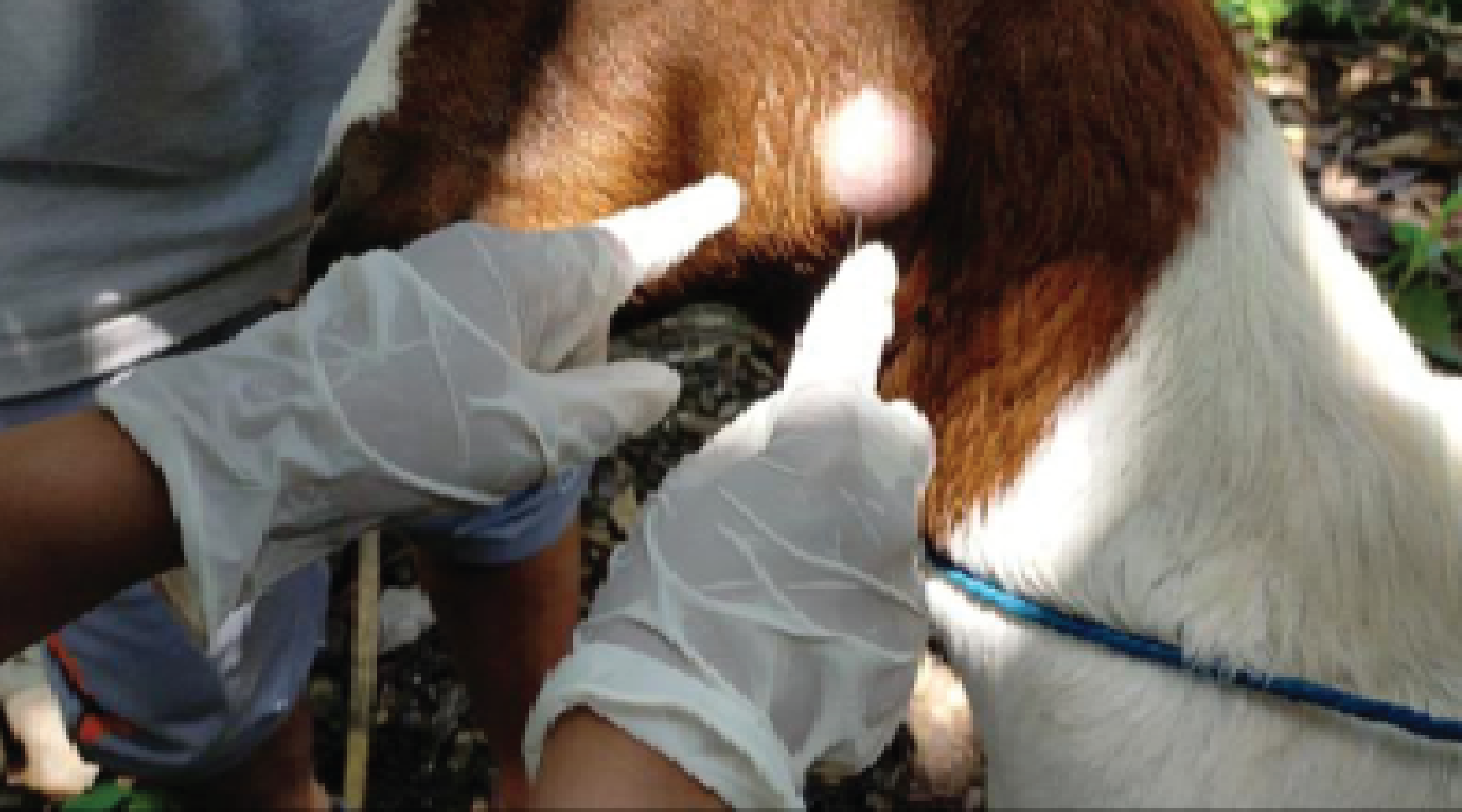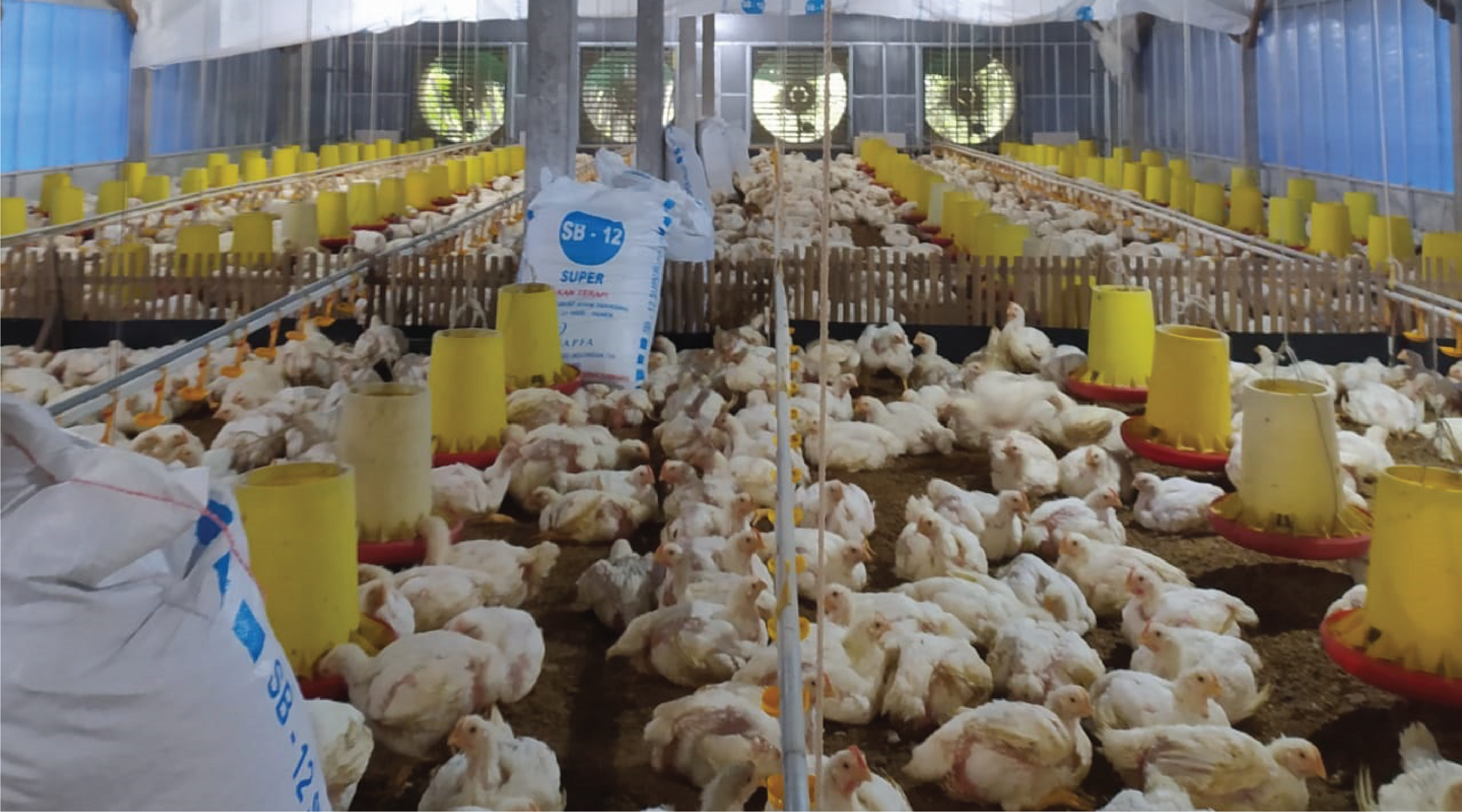Prevalence of Gastrointestinal Protozoal Infections in Local Cats (Felis catus) in Harau District, Limapuluh Kota Regency

Downloads
Background: One disease that often affects cats' health is infection caused by viruses, bacteria, or protozoa. Protozoa are parasites that can live in the cat's digestive tract. Purpose: This study aims to determine the prevalence of digestive tract protozoa in local cats and determine the types of digestive tract protozoa that infect local cats in Harau District. This study also calculated the percentage of cats infected with protozoa based on the sex and age of the cat. Method: The examination method used in this research is the floating method. Examinations were carried out at the Animal Health and Disease Laboratory of the Payakumbuh State Agricultural Polytechnic on 50 feces samples from local cats kept in Harau District. Cat feces samples were taken using purposive sampling in Harau District. Results: The results of the examination showed that 7 out of 50 cat feces samples in Harau District tested positive for digestive tract protozoa with a prevalence of 14%. Two types of protozoa were found, namely Isospora spp. with a prevalence of 10%, Toxoplasma gondii 8% and double infections (Isospora spp and Toxoplasma gondii) with a prevalence of 4%. Based on the gender of cats infected with digestive tract protozoa, the percentage of male cats was 10.5% and female cats were 16.1%. Based on the age group of cats infected with digestive tract protozoa, the percentage was 20% in the kitten group (1-7 months), 15% in the juvenile group (7 months-2 years) and in the prime period group (2-6 years) none were positive. Conclusion: These findings highlight the presence and distribution patterns of protozoal infections in local feline populations, emphasizing the need for targeted preventive measures based on age and sex.
Adams, PJ. 2003. Parasites of Feral Cats and Native Fauna from Western Australia: The Application of Molecular Techniques for The Study of Parasitic Infections in AustralianWildlife. Murdoch University,Australia.
Afiyah, S.N., 2015. Deteksi Protozoa Saluran Pencernaan pada Kucing Peliharaan di Kotamadya Surabaya. [Skripsi]. Fakultas Kedokteran Hewan. Universitas Airlangga, Surabaya.
Ginting, M.M, Apsari I.A.P, and Dwinata I. M., 2015. Identifikasi Ookista Isospora spp. pada Feses Kucing di Denpasar. Denpasar. Indonesia Medicus Veteriner, 4(2), 111-115.
Hastutiek, P, Yuniarti, W.M., Djaeri, M., Suprihati, E., and Suwanti, L.T., 2019. Prevalence and Diversity Gastrointestinal Protozoa in Madura Cattle at Bangkalan Regency, East Java, Indonesia.Veterinary World, 12(2), 198-204.
Irawan, F., Tiuria, R., and Akbari. R.A., 2023. Studi Tingkat Kejadian Infeksi Protozoa Gastointestinal pada pasien Kucing Di Klinik Rvet Bogor Tahun 2021. Acta Veterinaria Indonesia, 11(2), 131-138.
Mesquita, N., Suratma, N.A., and Dwinata, I. M., 2022. Prevalensi Infeksi Isospora spp. pada Kucing di Kota Denpasar. Buletin Veteriner Udayana, 14(6), 743-750.
Natasya, M., Arif, R., Tiuria, R., Triatmojo, D., and Wardaningrum, A.H.A., 2021. Prevalensi Kecacingan pada Anjing dan Kucing di Klinik Smilevet Kelapa Gading Periode Januari 2020-Januari 2021. Acta Veterinaria Indonesia, 9(3), 215-222.
Oktaviana, P.A., Made D., and Ida, B.M.O., 2014. Prevalensi Infeksi Cacing Ancylostoma spp pada Kucing Lokal (Felis catus) di Kota Denpasar. Buletin Veteriner Udayana, 6(2), 161-167.
Pagati, A.L., Suwanti. L.T., Chairul, A., Yuniarti, W.M., and Sarmanu., 2018. Prevalensi protozoa saluran Pencernaan Kucing Pasien Rumah Sakit dan Klinik Hewan di Surabaya. Journal of Parasite Science, 2(2), 61-66.
Putrawan, B.S., Jayanti, P.D., and Suartha, I.N., 2024. Isospora spp. Infection in a Five Month Old Male Cats. Veterinary Science and Medicine, 6(2), 112-120.
Rahman, I., and Nur, A., 2022. Identifikasi Toxoplasma Gondii Terhadap Feses Kucing Peliharaan Sebagai Sumber Penyebaran Toxoplasmosis di Kota Ternate. SAINTIFIK: Jurnal Matematika, Sains, dan Pembelajarannya, 8(2), 146-150.
Sasmita, R., Mussa, O.R.P.A., and Benu, H.A., 2019. Infeksi Endoparasit pada Kucing Domestik (Felis Domesticus) di Pasar Tradisional Kecamatan Sawahan Kota Surabaya. Jurnal Vitek Bidang Kedokteran Hewan, 9(1), 38-43.
Setyoningsih, A.P. 2004. Identifikasi Protozoa Saluran Pencernaan Kucing di Beberapa Lokasi di Bali. Fakultas Kedokteran Hewan Udayana. Denpasar
Subekti S., Mumpuni S., Koesdarto S., Puspitawati H., dan Kusnoto., 2010. Buku Ajar Parasitologi Veteriner. Fakultas Kedokteran Hewan Universitas Airlangga. Surabaya.
Sucitrayani, P.T.E,. Oka, I.B.M., and Dwinata, M., 2014. Prevalensi Infeksi Protozoa Saluran Pencernaan pada Kucing Lokal (Felis catus) di Denpasar. Buletin Veteriner Udayana, 6(2), 153-159.
Wuri, D.A., Haan,V.A.S, Kallau, N.H.G., 2022. Tingkat Prevalensi Toksoplasmosis pada Kucing Peliharaan di Enam Kecamatan di Kota Kupang. Jurnal Veteriner Nusantara, 6(2), 1-8.
Copyright (c) 2025 Authors

This work is licensed under a Creative Commons Attribution-ShareAlike 4.0 International License.
- The journal allows the author to hold the copyright of the article without restrictions.
- The journal allows the author(s) to retain publishing rights without restrictions.
- The legal formal aspect of journal publication accessibility refers to Creative Commons Attribution Share-Alike (CC BY-SA).

Journal of Applied Veterinary Science and Technology is licensed under a Creative Commons Attribution-ShareAlike 4.0 International License





























